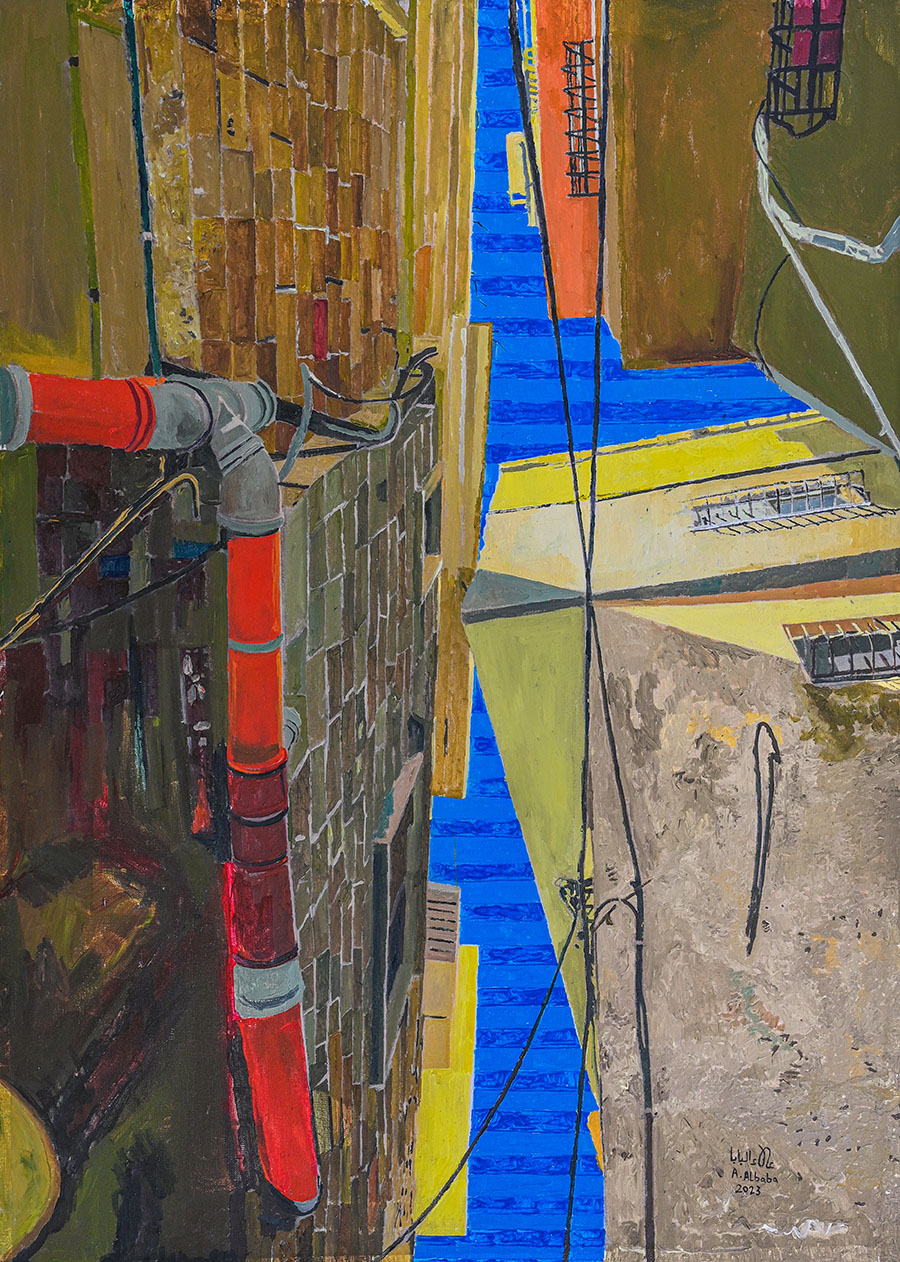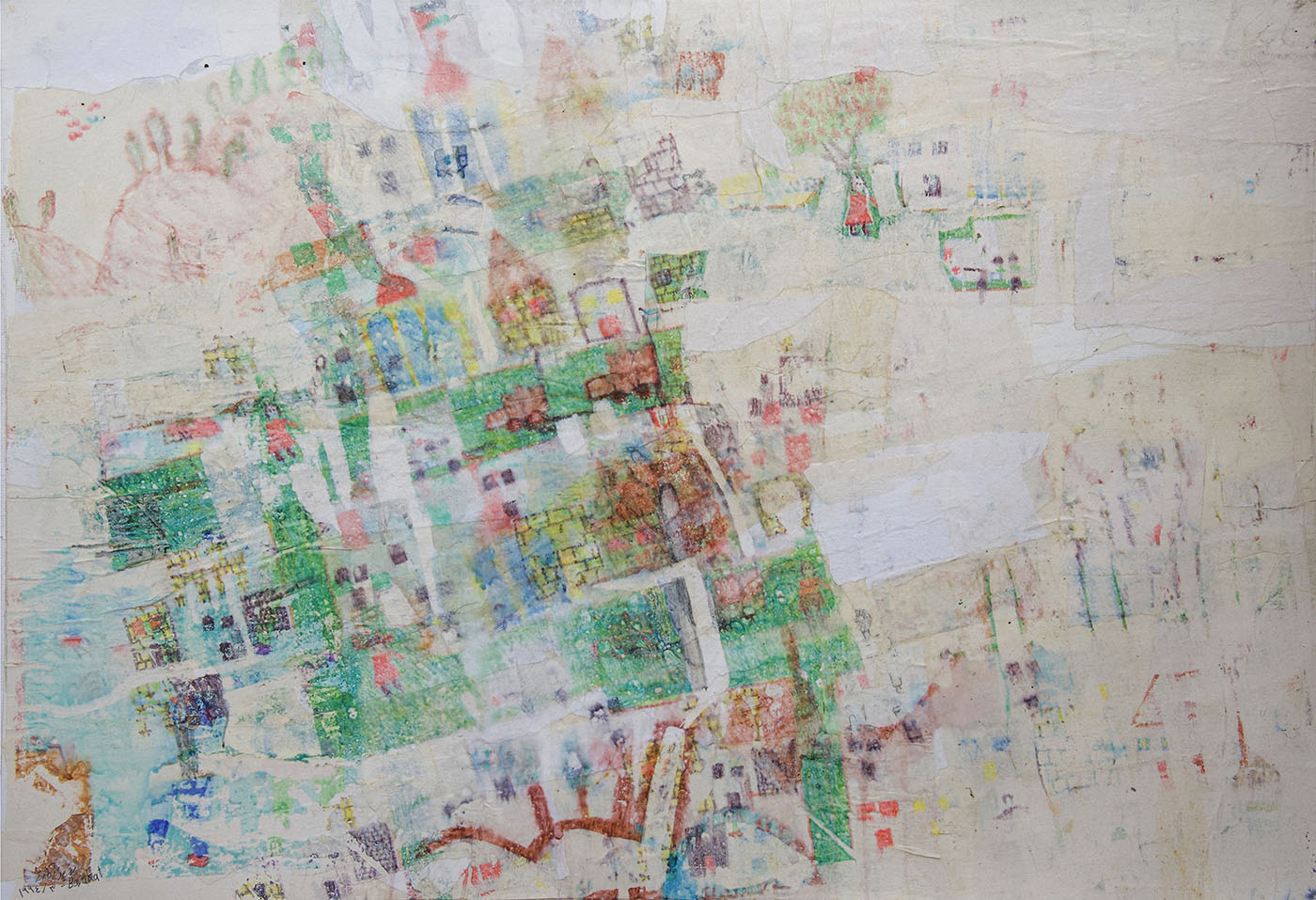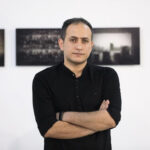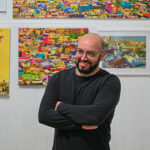Refugee camps, control, and dispossessed lives by artists Heba Tannous, Mahmoud Alhaj, Tayseer Barakat, Alaa Albaba, and photographer Iason Athnasiadis.
Malu Halasa
Who gets to decide where people live? Or which areas they should evacuate to, in order to avoid bombing or bloodshed? These are fundamental issues explored in “Barred from Home,” which features artwork from Palestine’s past and dystopian present alongside photojournalism taken during the 2014 occupation of large parts of Iraq by the Islamic State. There is also a detour into Europe and the lives of dispossessed migrants there in their quest for not just a better life, but for a semblance of normality.
This slideshow gallery for The Markaz Review’s GATEKEEPERS issue opens with “Displaced,” by the artist and architect Heba Tannous. She writes in an email that the artwork is “a direct response to the relentless violence and forced displacement occurring in Gaza.” In her series “The City from Above” she draws the roofs of Jenin Refugee Camp, home to Palestinians who were forced to flee their homes during the 1948 Nakba. Located in the West Bank, the area came under Israeli control during the 1967 war. Today, as the camp is yet again under attack by the IDF, Tannous believes that the view from its roofs “challenges common misperceptions about who lives there and what the camp represents.”
Her impressionist, geometric forms, she goes on, “explore and illustrate the profound impact of occupation on Palestine’s built environment, examining how it has altered not only the physical landscape but also the social and cultural fabric that architecture inherently represents. The occupation has fragmented and reconfigured urban spaces through the construction of settlements, separation barriers, and restricted zones, disrupting the continuity of Palestinian cities and towns.”
But these places, she adds, are not soulless. “In response, the people have shown resilience, developing innovative ways to reclaim, preserve, and adapt their spaces within these imposed constraints.”

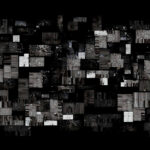

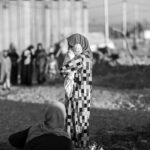


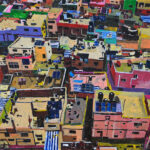








Tannous and the artist Mahmoud Alhaj, also featured in “Barred from Home,” belong to a generation of up and coming Palestinian artists. Tannous posts her work, including live sketching on Instagram, while Alhaj has emerged as an adept manipulator of digital imagery.
Their work stands in sharp contrast to that of veteran Palestinian artist Tayseer Barakat. Barakat is considered one of the founders of the Palestinian modern art movement, along with Nabil Anani, Sliman Mansour, and Vera Tamari. Their much vaunted, historic group New Visions boycotted conventional art supplies from Israeli suppliers. They instead incorporated raw materials from Palestine, such as mud, straw and henna, in their artwork.
Barakat was born in 1959 in the Jabaliya refugee camp that has been heavily bombarded by Israel during its war on Gaza. His exhibition Gaza: Recalling the Collage of a Place — viewable online until 15 September at the Zawyeh Gallery — includes work from over the decades. There are many ways to interpret his regimented lines of people and palm trees in “Untitled 2,” from 1989. Its dream-like imagery recalls those forced to leave their homes in the pursuit of a false promise of protection. Or perhaps they are martyrs who have been left behind, in graves alongside each other, or suffocating in the almost folksy primeval yet politically potent compartments of “Fragments,” created 17 years later.
Because of the Israeli occupation and his rare visits home to the Gaza Strip, Barakat’s estrangement from where he grew up can be understood in ruminating memory represented metaphorically by darkness in many of his artworks. The artist once acknowledged how the monotone coloration of his paintings and collages, “reflect the hardships of our time and our present life. I think the pressure on us makes us use dark colors.”
Also filled with foreboding is the Control Anatomy exhibition by Mahmoud Alhaj, online as well as in Zawyeh Gallery Ramallah until the 15th of November, 2024. It is not the past that matters but an unrelenting presence of violence or the threat of it in present-day Palestine.
The curator of the exhibition, Rania Anani, has written about the artist: “Alhaj views the technology of violence production as the culmination of an ongoing workshop organized by the colonizer behind the scenes to invent the most violent methods to subjugate Palestinians.”
As she continues, he “dissect[es] quality images of human rights abuses, violence, and colonial strategies, both visually and conceptually, then reconstructs them through an intensive digital process, creating new works that provide unexpected results open to diverse interpretations. This involves integrating them with images and materials from other sources, such as Google Maps, aerial reconnaissance shots, and empty medicine pills sheets.”
The blurred outline of IDF soldiers stalk the separation wall represented by unconnected stone slabs in “Long Exposure Memories No. 1.” Highrises become shooting galleries, not the kind used by junkies, but rather by snipers. His bold, perceptive artwork has been shown in Gaza.
The most vibrant and colorful acrylic paintings in “Barred from Home” are by Jerusalem-born Alaa Albaba. Last year he held an open studio under the auspices of the Zawyeh Gallery in Al-Am’ari refugee camp, in Ramallah. For the artist, the Palestinian refugee camp may be overpopulated, and its claustrophobic, makeshift structures, buildings and thin alleyways densely packed together. Yet, despite the hardship and the attacks against it, community prevails in the bright sunlight.
Community is no doubt there among friends and families who have spent generations in the camps. However, for the ethnic Arabs, Kurds, Assyrians and Turkmens, and other religious minorities displaced from Mosul during the Islamic State takeover of the city in 2014, there is isolation mixed with plain pleasures. In the photographs of Iason Athanasiadis, splashing children play in the puddles after a hard rain, or the now lost thrill of a kid once given a football shirt of his soccer hero Ronaldo.
Again, writing by email, the photojournalist, television producer, and writer explained the focus of his work: “By virtue of speaking Arabic and Persian (two of the main languages spoken by refugees and asylum seekers) and living in Greece, Afghanistan, Iran, Libya, Turkey and other countries that initiate refugee flows or act as corridors, I ended up working on the issue of migration before and since 2015.”
In the weeks we’ve been in touch, he has been on assignments away from his desk. He witnessed the fear of Iraqi men caught in the no-man’s land between ISIS and the Kurdish forces in Iraq. He followed migrants on the Greek islands and documented the migrant trail in Europe. He thinks deeply about the people, their suffering, and their small hopes which he has photographed.
In answers to some of my questions he wrote to me, “I’m troubled by the way in which the media packages the conundrums faced by migrants and refugees. It is a type of suffering that Portuguese thinker Boaventura de Sousa Santos ironically describes as a ‘just suffering (which) is the precondition that spares us, as fully human, the unjust suffering we would have to endure if they were to invade.’ I interpret this as meaning that the pretend pity with which we face Third World refugees is merely a virtue-signaling screen, an absolution of sins, sparing us the need to confront the deeper causes of their condition, and recognize that we inhabit an unjust world as its untroubled victors.
“Santos points out that ‘drowned migrants … dared to enter illegally what they were never supposed to enter — the society of the fully human.”
In one of Athanasiadis’s photographs, an African migrant walks through Catania in Sicily. He may not be forcibly barred from home, but in seeking a new one, his blurred image against a residential ziggurat conveys the insurmountable contrast between the haves and the have-nots.
In the sequence of the slideshow gallery, the image preceding the Catania photograph most conveys the unremitting authoritarianism (the view from an unseen, unknowing “high”) that seems to pervade the streets and displaced persons’ camps in Athanasiadis’s photographs.
With all that he has witnessed, he believes that “at a time when spiraling global geopolitical competition precipitates new floods of displaced humanity, there is no better moment for applying Santos’ idea of cognitive justice, i.e. taking responsibility for being informed about our global reality, instead of hiding behind a newly fashionable apolitical trend of wallowing in gender identities and sexual semantics.”
Cognitive justice and taking responsibility are duties for those who have agency and control over their lives and societies. For migrants and refugees with no secure foothold in the wider world, some are sustained by memory, hope, and community. This sense is captured in the childlike collage, ink, watercolor, dyes and pencil on paper of Tayseer Barakat’s “Lost Landscape.” In contrast to his other brutalist monotone works, this one is splashed with muted color and ends “Barred from Home.”
For many who come from or live in places ravaged by war, all that remains of homeland is a yearning long after memories fade to black.














